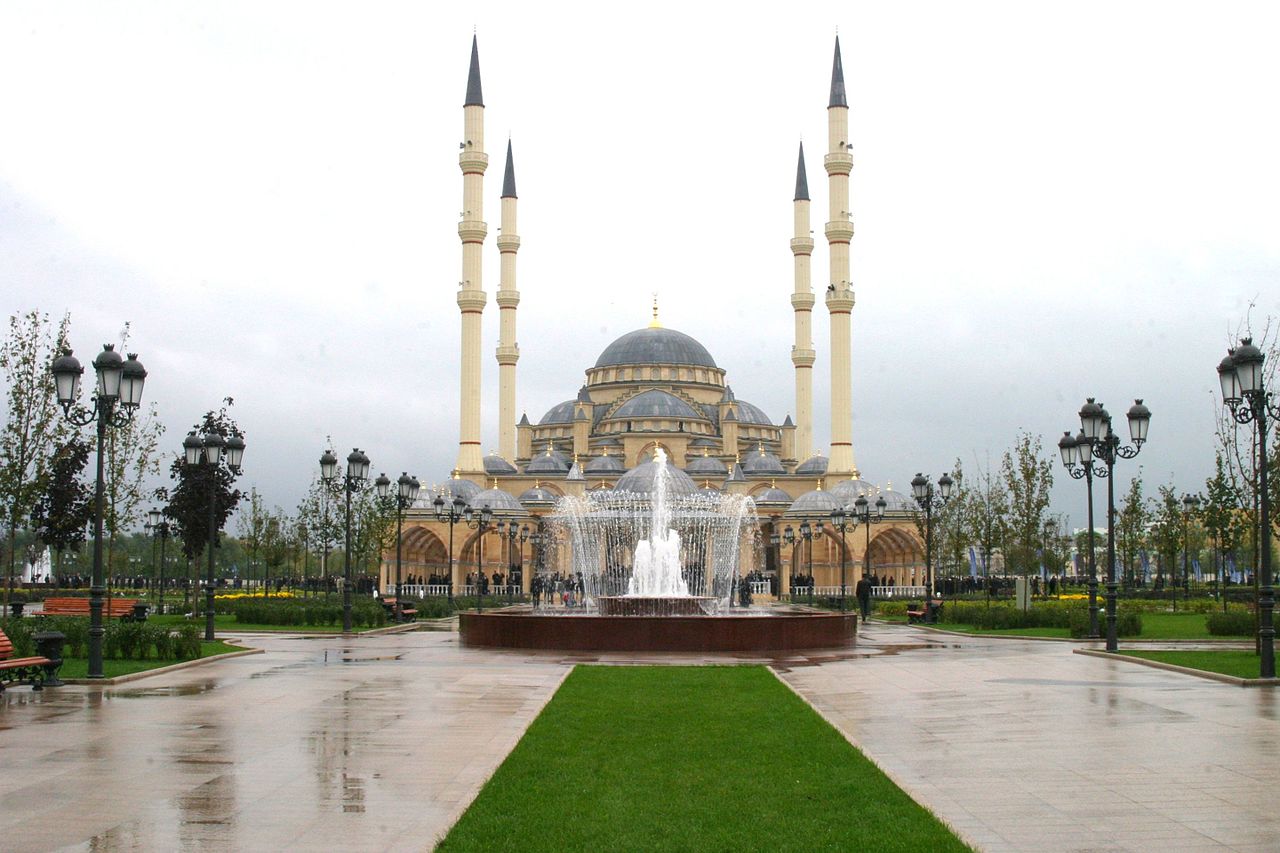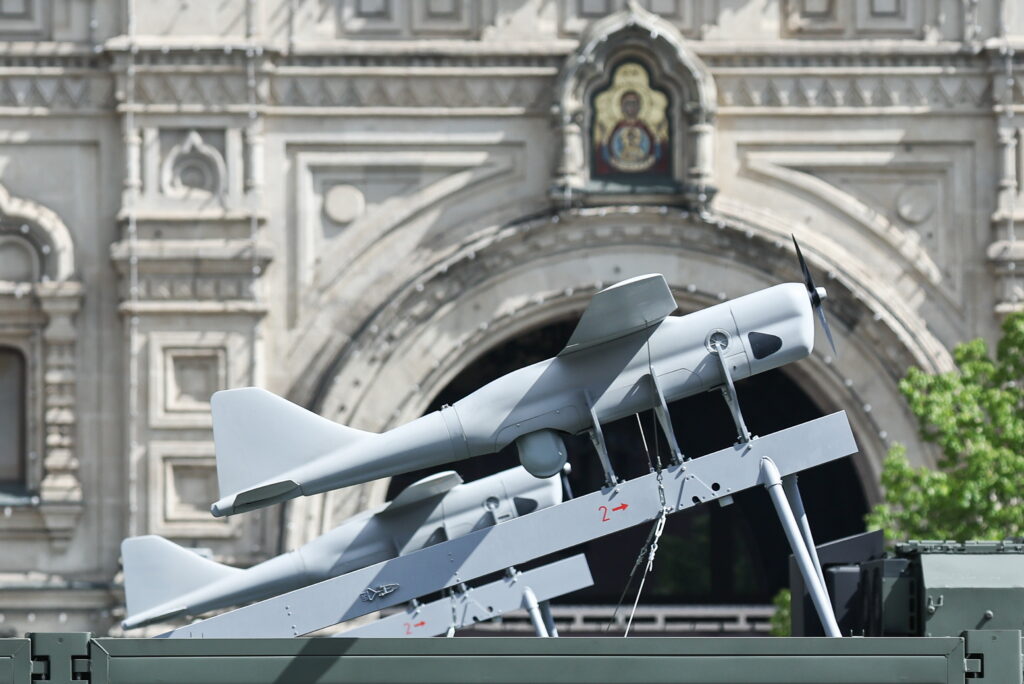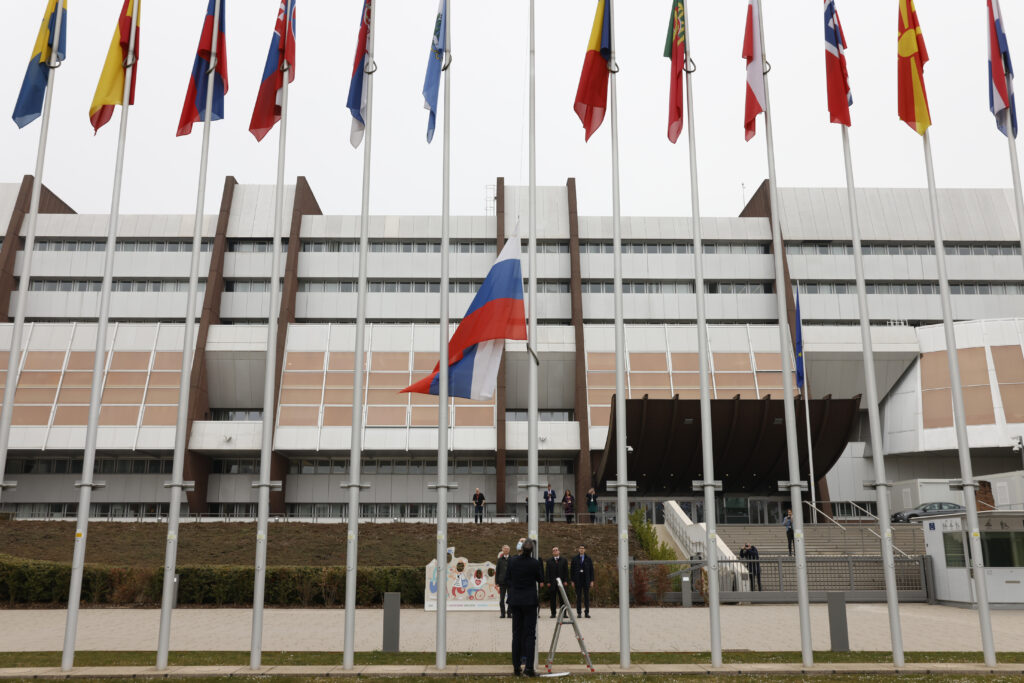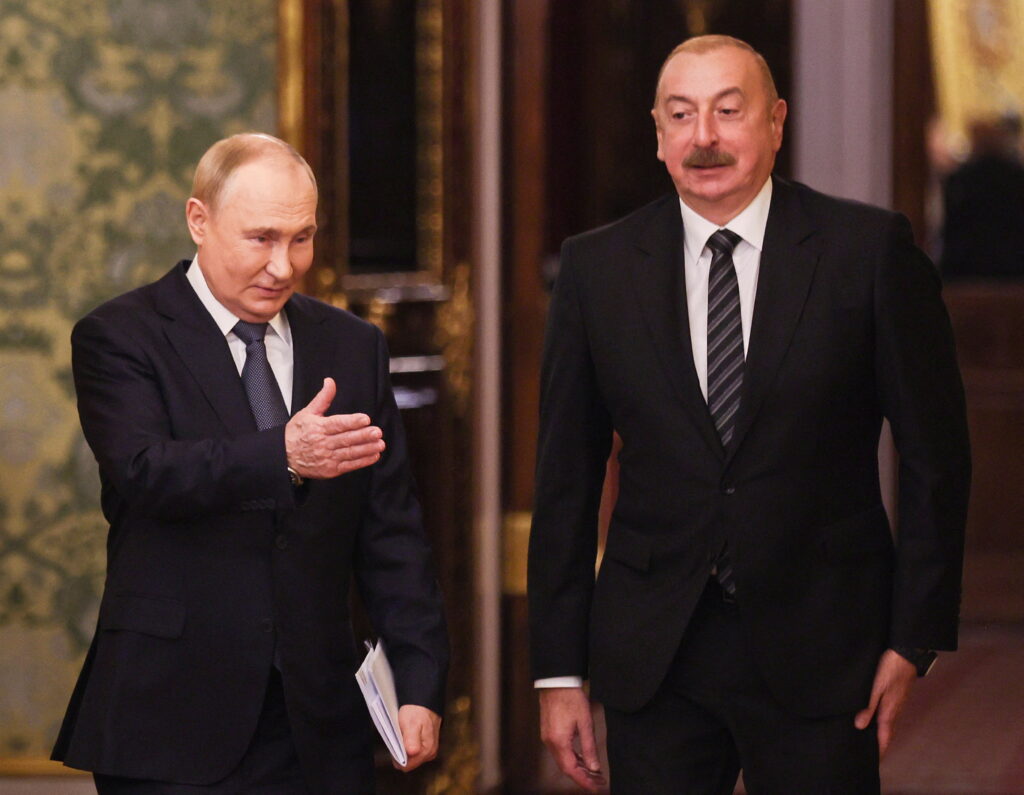According to the UNHCR, a total of 97,810 Russian citizens applied for asylum or some form of international protection in 2016. Europe has been and remains a popular destination for humanitarian migration from Russia.
Across the 28 EU countries, one in five requests for asylum or some other form of protection filed by Russian citizens are granted (20.2% of the total number of applications submitted), ending in either a tolerated stay or deportation.
Most of those who flock from Russia to Europe seeking asylum and protection are Russian citizens of Chechen nationality. Their road to the west runs through the Belarusian-Polish border, where they then head onwards to France, Austria, Belgium and Germany. There are still no reliable statistics on the size of the Chechen diaspora in Western Europe, although experts believe that the number of Chechens living in the EU countries is approximately 150,000, with 40 thousand in France, 30 thousand in Austria, 20 thousand in Belgium and 10 thousand in Germany.
Poland as a country of transit
Until 2010, Poland actively provided international protection to Russian citizens. According to the Office of Foreigners (Urząd do Spraw Cudzoziemców), in 2008, some form of legal protection (ochrona uzupełniająca) was granted to 1,057 Russian citizens (with 2,261 in 2009); a deportation ban and the right to stay (pobyt tolerowany) was granted to 1,486 Russian citizens (46 in 2009) while 129 people received the refugee status (102 in 2009). However, in 2010, as many as 83.2% of petitions filed by Russian citizens were rejected: protection was granted to only 141 Russians, 74 received the right to stay, and 42 obtained refugee status in Poland.
For the past several years, Poland’s authorised bodies have been trying to limit the flow of asylum seekers from Russia, not accepting asylum applications and trying to prevent Russian citizens planning to file such applications from crossing of the Belarusian-Polish border. This situation attracted the attention of the European Court of Human Rights (ECHR). A large Chechen family appealed to the ECHR with a complaint: They had tried to cross the Belarusian-Polish border more than 16 times. Now, the ECHR must establish whether or not Poland has violated the European Convention on Human Rights. The ECHR ordered the Polish government to provide a detailed response to questions about its procedure for granting asylum to Russian citizens of Chechen nationality and to explain the situation concerning the Chechen family who filed a complaint.
Experts from the Belarusian human rights organisation Human Constanta have noted that Chechens make on average from 10 to 40 attempts to cross the border. The portrait of an average Chechen migrant who tries to cross the border of Belarus seeking refuge in Europe is roughly as follows: predominantly male, aged 33.9 years, forced to hide from the authorities of Chechnya, because of local vendettas, state persecution or other reasons.
Russian refugees of Chechen origin in Poland and on the Polish-Belarusian border are a headache for the authorities in both Belarus and Poland. In 2016, Poland refused entry to more than 118 thousand people, of which more than 100 thousand had no entry permits. The ‘leaders’ in this humanitarian flow are citizens of Russia, most of them of Chechen nationality (75,899 people), as well as citizens of Ukraine and Tajikistan. Their applications for asylum or other forms of protection in Poland have a very low rate of success: out of nearly 12,000 applications filed in 2016, only 258 were granted. Those who have managed to cross the border are placed in reception centres in Biała Podlaska or Dębak, where information on the rules of residence as well as excerpts from Polish asylum legislation are published in Russian and Chechen languages.
Poland is a transit country rather than the final destination for Russian refugees of Chechen origin. Quite possibly, Polish authorities would react more softly to the situation on the Belarusian-Polish border if the EU had no rule saying that ‘the first country which a humanitarian migrant enters and files an asylum application in is responsible for reviewing the application and making a decision with respect to that individual.’
Today, the Polish government is faced with the situation where the immigration services of other EU countries (mainly Belgium, France and Germany) refuse to review asylum applications filed by Russian citizens of Chechen origin and refer these individuals back to Poland’s jurisdiction. Poland is far from happy about these developments.
Chechens in countries of Western Europe (the example of Germany)
The history of the humanitarian migration of Chechens to Germany dates back to the 2000s. The first Chechen war (1994–1996) did not cause a rise in the number of asylum applications from Russian citizens either in Germany or in Europe as a whole. The situation changed after the start of the second Chechen war, officially called the ‘counter-terrorist operation in North Caucasus’. In 1999, a total of 368 asylum applications were filed in Germany by citizens of the Russian Federation. In 2000, as many as 3,001 were filed, of which 1,025 were from Russian citizens of Chechen nationality. In 2001, the total number of applications from citizens of the Russian Federation rose to 4,824 (of which 1,994 were filed by people of Chechen nationality); in 2002, the number reached 4,447 (2,017), then 3,878 in 2003 (1,946), 3,330 in 2004 (1,699), 2,291 in 2005 (1,023), 1,413 in 2006 (639), and 1,079 in 2007 (453).
In general, the success rate of asylum applications filed by Chechens in Europe varies greatly from country to country and changes over time. The most ‘successful’ years for Chechens seeking asylum in the EU were in 2003–2005. In 2003, the success rate for applications asking for the status of a refugee or subsidiary protection was 1% for Russian citizens of Chechen origin in Slovakia, 2.4% for Poland, 94% for Austria, and 22% in Germany.
However, the migration services and courts of the EU countries, including Germany, took an ambiguous stance in respect of humanitarian migration from Chechnya even in those years. For instance, in 2001, Germany granted 30% of applications from Chechens asking for asylum or protection (subsidiary protection status). The respective figure for 2002 was 20%, with 22% for 2003 and 32% for 2004. In 2016, only 424 people out of 9,850 Russian citizens of Chechen nationality received the refugee status or the status of a person in need of protection, which was less than 4.3%.
On the one hand, Germany’s Foreign Ministry recognised the Russian Federation as a country capable of guaranteeing internal shelter for Russian citizens of Chechen nationality. On the other hand, some of those citizens were granted asylum in Germany because of ‘the absence of internal shelter in the territory of the Russian Federation and the inability to guarantee their security in the territory of the Russian Federation’. The German federal system enables the country’s courts to decide, at their own discretion, whether the territory of the Russian Federation, with the exception of Chechnya, is an internal alternative for asylum in another country or not. Sometimes the courts of a specific region take radically opposed views on the matter. As a result, the asylum procedure in Germany contains this mandatory element, i.e. a court must review a refusal of the immigration authorities to grant asylum to Russian citizens of Chechen origin. Nobody knows what kind of decision will be adopted in each particular case until the actual ruling.
Another wave of migration of Chechens to Germany came in 2012, when 3,202 Russian citizens applied for asylum (up by 90% versus to the previous year). For the first time ever, Russia advanced to the eighth position among countries whose citizens sought asylum in Germany. In 2013, the situation became even more dramatic: Russia took first place in terms of the number of applications filed: there were 14,487 applications, up by 353% compared to the previous year. The surging interest in the current situation among experts and the media helped to clarify that the new wave of migration from Chechnya to Germany was driven by fake news spread by members of the Chechen diaspora living in the EU. According to that news, Russian citizens of Chechen origin were allegedly entitled to allowances in Germany and a simplified procedure to obtain land allotments, welfare benefits and other forms of social support.
Western attitudes towards humanitarian migration from Chechnya are ambiguous. On the one hand, the dictatorial style of governance in ‘Kadyrov’s caliphate’, the numerous human rights violations and the absence of opportunities for legal protection both inside Chechnya and in Russia as a whole are a source of serious concern. In June 2017, for the first time in many years, the German embassy in Moscow issued a humanitarian visa to a Chechen man who sought asylum in Germany because of persecution suffered in connection with his sexual orientation. This was an exceptional case of a humanitarian visa issued to a person in the country of residence because the person could not be guaranteed safety and the right to live. Similar exceptions in immigration practices were made by France and Lithuania who granted asylum to Russian citizens of Chechen nationality. On the other hand, the German media suspect that 2,745 Russian citizens who applied for a refugee status in Germany in the first half of 2017 (80% of them being of Chechen nationality) are the ‘Kremlin’s secret weapon’designed to destabilise the order in Germany.
Russian citizens of Chechen nationality get special attention from police and immigration services in the EU countries. Chechens have different motives and reasons for migration. Some of them venture out to Europe for asylum and security, hiding from persecution and human rights violations in their republic, but there are also others who, under the guise of refugee status, act as ‘moral guardians’ among their compatriots. The latter arrange hunting for members of the LGBT community, as well as Chechen women and girls whose behaviour allegedly does not comply with the rules of Nokhchalla, and those who oppose Kadyrov’s regime.
It is obvious to European law enforcement agencies that a large group of Russian citizens of Chechen nationality require special support measures during their integration. Back in 2011, the Austrian Foreign Ministry noted that 1,681 asylum seekers from Russia were involved in criminal activity in their country: 90% of them were Russian citizens of Chechen nationality. They often make it into German criminal records. In August 2014, six Chechens attacked a restaurant run by the Yezidis in the small town of Herford in North Rhine-Westphalia. In October 2014, a clash of 70 Kurds and 30 Chechens took place in the town of Celle in Lower Saxony. Heiko Homburg, representing of the local agency for the protection of the Constitution in Brandenburg, mentioned ‘the clan-based system of criminals, built by Russian citizens of Chechen origin’. His statement was neither confirmed nor refuted at the federal level.
Russian citizens of Chechen origin, crossing the Belarusian-Polish border on the quest for asylum in Europe, have put the migration authorities in EU countries to a difficult test. It is far from easy to distinguish Chechens who are hiding from persecution and local feuds and who have no alternative of an internal shelter in the Russian Federation, from other asylum seekers. This is a huge field that calls for cooperation of all interested countries involved in this process, including Russia, Belarus and the EU member states.










